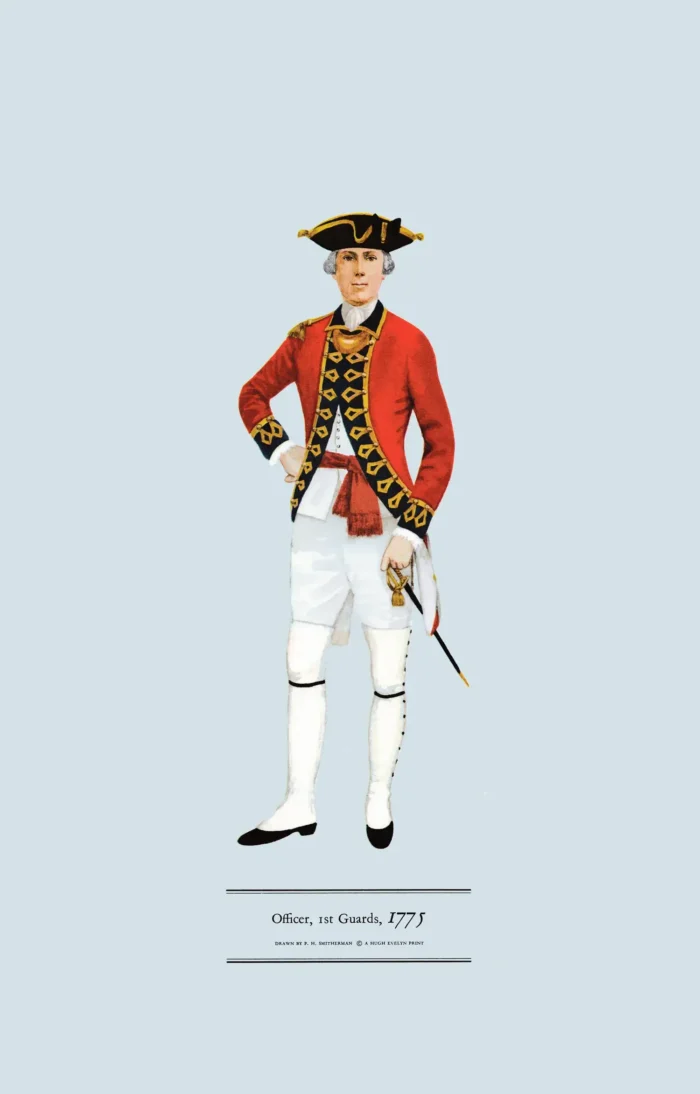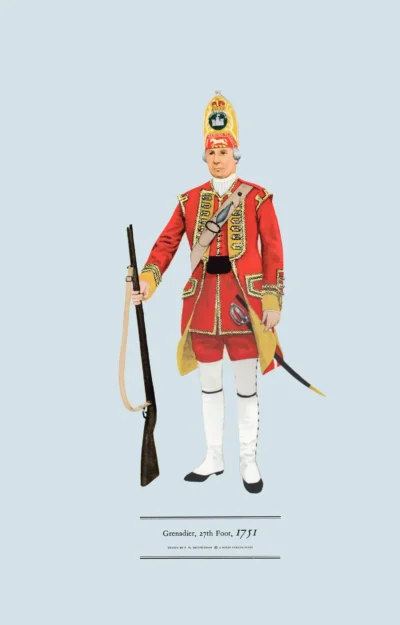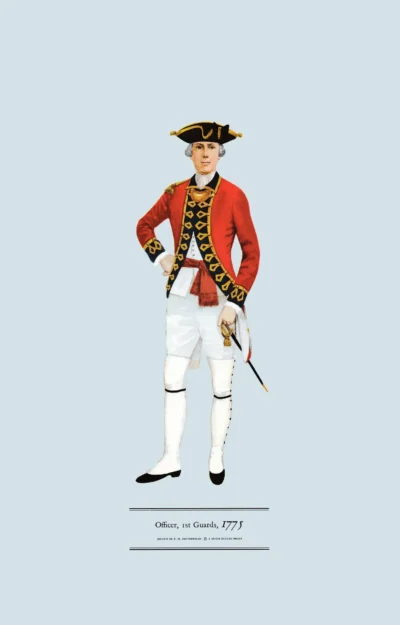Officer, 1st Guards, 1775 (Grenadier Guards)
£12.50
Named The Grenadier Guards after the Battle of Waterloo, 1815; The Guards Division (scroll down for a more detailed Description)
Published 1965 by © Hugh Evelyn Limited; drawn by Colonel Philip Henry Smitherman (1910-1982), Royal Corps of Signals
Size: c. 24.5 x 37.5 cm [9 ½ ″ x 14 ½ ″] (may vary slightly from printers’ cut 50 years ago)
Printed on on medium cardstock weighing 144 g/sm2 faced in light greyish blue (RGB c. d4e1e8)
Print is STANDARD size – shipping is the same for 1 to 10 prints (based on largest print size in your order) – see Shipping & Returns.
In stock
Description
Formed in 1656, when Lord Wentworth’s Regiment was raised in Bruges to protect the exiled Charles II the regiment fought in the War of Austrian Succession, the Seven Years’ War, and the Napoleonic Wars. After the Battle of Waterloo, it was renamed the Grenadier Guards. As such it fought in Crimea, Egypt, the Sudan, and S Africa, as well as 2 World Wars, Korea and many modern operations. This plate, based on actual uniforms, shows an officer of the 1st Guards (today the Grenadier Guards) in ceremonial dress. On parade he would be armed with a spontoon as well as his sword. The officers of the other Guards regiments would have been dressed very similarly. A notable feature are the ‘bastion’ loops of gold lace on the lapels. These became very popular and were adopted by many regiments. All these bars and loops of lace, of course, developed from the buttonholes originally on the coats. Previously the skirts of the coat had been lined with the facing colour, blue in the Foot Guards, but here they are white, and it was now almost universal for skirts to be lined like this. These white turn-backs, fastened with an ornamental device, survived in vestigial form on the tails of the coatee until the Crimean war, after which the whole coatee was replaced by a tunic, cut in modern fashion. The braiding on the mess dress of captains and above in the Royal Navy still shows the outline of the pockets worn on coats of this period.
Sources: Existing coat and a series of contemporary water-colours of the Foot Guards.
Additional information
| Weight | 0.0131 kg |
|---|---|
| Dimensions | 23 × 37 cm |





